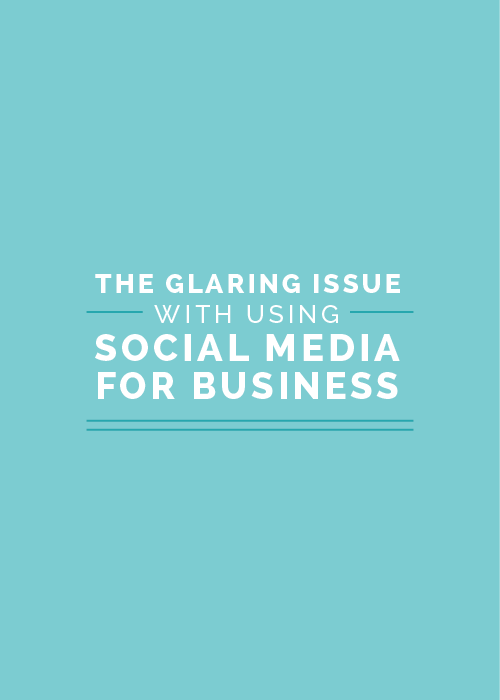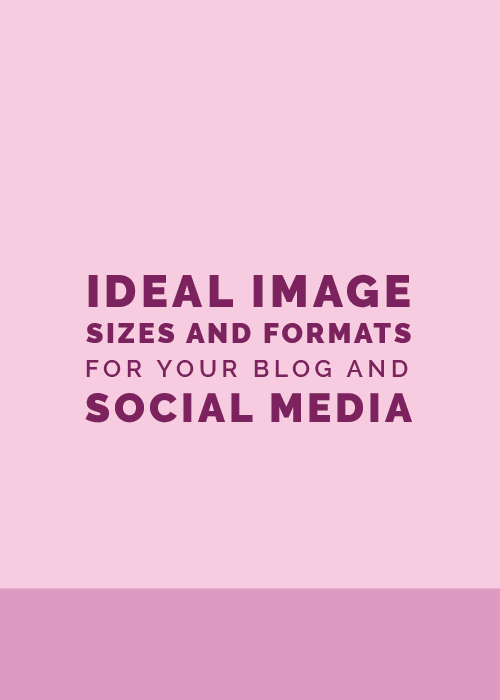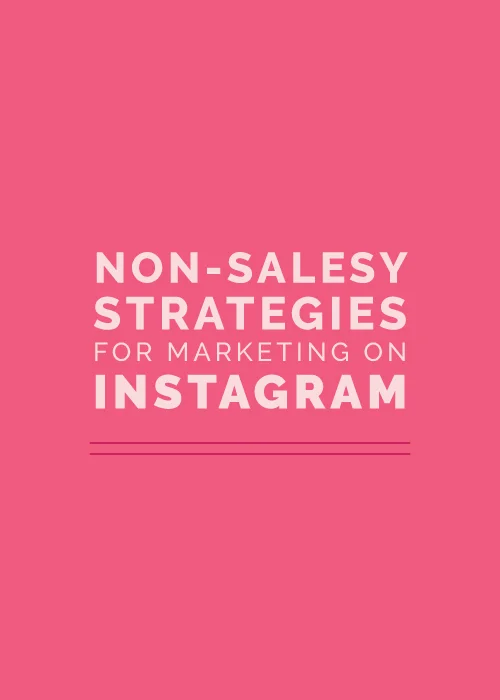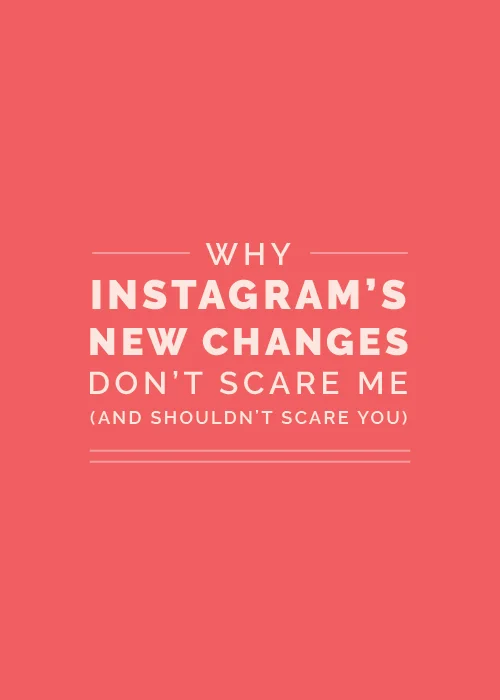The benefits of using social media for business are obvious.
Social media platforms allow you to reach your target audience in the places where they hang out the most. They help you network with others in your industry (and stay up to date/keep an eye on what they’re up to). They give your audience the opportunity to follow along with you and it give you the opportunity to engage and communicate with them.
And, oh yeah, social media accounts are free.
But despite all of these excellent benefits, there’s one glaring issue with using social media for business.
The issue: Too many business owners focus so much on growing their social media accounts that they forget the overarching goal: sales and bookings.
It’s easy to get wrapped up in a numbers game and lose sight of the importance of using platforms like Twitter, Instagram, and Pinterest for business in the first place. Here are 4 things to consider when approaching social media as a creative entrepreneur.
Business success is measured by revenue, not followers
It’s easy to look at the number of followers someone has on Instagram and determine their success. But wouldn’t it be interesting if their income was also listed on their profile, right beside their large number of followers? I wonder how many accounts you and I follow where those numbers wouldn’t make sense. It's easy to project your ideal lifestyle over social media.
But social media isn’t a popularity contest, especially in the business world. While having a large social media following has its benefits, like the number of people you’re able to market to, it isn’t quite so impressive if the majority of those people never buy from you.
Your number of followers on social media isn’t equivalent to your number of customers.
And while this isn’t new news, I bet you (like me) have fallen into that trap of measuring success by the numbers that appear on social media profiles. Instead, pay more attention to the end goal: sales and bookings.
Yes, it’s fantastic to reach more people and make connections on social media. Like I said at the beginning of this post, there are numerous benefits to using platforms like Twitter, Pinterest, YouTube, Periscope, and Instagram for business. But don’t forget that the goal of utilizing those platforms for your business is to market your products and your services.
Which leads right into insight #2...
Social media should be viewed as a funnel
It’s easy to get so wrapped up in reaching the next benchmark of followers - whether it’s 100, 1000, or 10000 - and forget about the marketing aspect of using social media for business.
Social media is a marketing tool. Its main purpose for business is to drive sales and generate bookings. And where do those sales and bookings take place? On your website.
Your website is your business’s “home base;” it’s where all the action happens. New visitors can learn more about your business on your about page and browse your FAQS. They can read up on your services and packages, view your portfolio, and see your expertise first-hand on your blog.
And most importantly, your website is where potential customers can purchase your products and potential clients can contact you to book your services (which, as you remember, is the end goal).
Unless you operate a business where people leave their PayPal address in a comment on your Instagram or Facebook posts, people can’t purchase items or book services directly from your social media accounts; they’re forced to click through to your website.
This is why social media should be viewed and used as a funnel. As a business owner, the goal of each social media account should be to generate interest for your products and services and funnel traffic back to your website.
Social media forces you to play by someone else’s rules
As an account-holder on social media platforms like Facebook, Twitter, Instagram, and Pinterest, you’re always at their mercy; you’re forced to play by their rules.
So, Facebook only wants to share your posts with 10% of your following? Well, there’s not much you can do about that unless you’re willing to fork over more money to expand your reach.
And the average lifespan of one tweet is 18 minutes. It doesn't have to take a rocket scientist to figure out that each tweet reaches a small fraction of your audience. Not to mention you can only use 140 characters. Guess you’re going to have to change your wording to something else, remove your catchy image, or opt out of sharing a link in order to fit it all in.
And while the word count thing isn’t as big of a deal, it’s a little frightening to think that these social media platforms could switch things up at any moment and affect how we’re able to reach our audiences.
For example, what would happen if Instagram followed suit with its parent company, Facebook, and forced you to “pay to play” (pay money to reach more of your followers)? Would your business be up the creek?
What you might consider putting more time into instead
But there is another option that allows you to play by your own rules, and even better, it’s a marketing tool that’s available right on your very own website: your blog.
Like social media, the benefits of blogging are numerous but unlike the benefits of social media, they aren’t quite so obvious to many business owners. Here are just a handful of advantages blogging has over social media.
Blogging draws your audience directly into your website. You don’t have to work as hard to point people to your shop or your services page. Blog visitors are easily able click over to the other pages of your website and explore your offerings.
Blogging gives potential customers a reason to keep returning to your website. When your audience knows that they can consistently come to your site for great content, they have a reason to return to your site on a regular basis. And the more they return to your site, the more familiar they become with your business, and the more likely they’ll buy from you down the road.
Blogging gives you content to share and link back to within your social media posts. Blogging allows you to be salesy without being salesy. You don’t have to continually post about your products or services on social media in order to get people back to your website; you have blog posts to point them to. And when your blog is full of helpful content that benefits your audience, following a link back from a social media post will be a no-brainer.
Blogging gives your audience content to share and link back to within their social media posts. The great thing about blogging is that your audience does some of the marketing for you. If they like a post and find it helpful, they’re usually more than willing to share it with their audience by pinning it to their Pinterest boards and linking to it in a tweet or Facebook post.
Blogging allows you to share different kinds of media without restriction. There’s no word limit. You can upload an entire video (or link to it from YouTube or Vimeo). Photos are easily seen at a decent size. It’s the best of all worlds.
So if you’ve been pouring a lot of time and energy into social media while letting your blog fall by the wayside, consider switching things up a bit in order to work toward your business’s end goal - sales and bookings.
Instead of getting sucked into the social media numbers game, start focusing more time and energy into your number of customers, not followers.
While social media is an extremely helpful marketing tool for businesses, it’s just that: a tool, not an end goal. Use it as a funnel and consider other marketing tools like blogging in order to increase your chances of making sales and booking clients.
Do you view social media as a marketing tool for your business? How do you use it to drive your followers back to your website?
Did today’s post spark your interest in blogging? I’ll be sharing tips for boosting your blog traffic in tonight’s ellechat at 8pm EST!
We’re switching things up this go-round by hosting a live webinar and we’ll have the chat feature ready so participants can chime in with feedback. There are still a few seats open, and we would love for you to join us!













